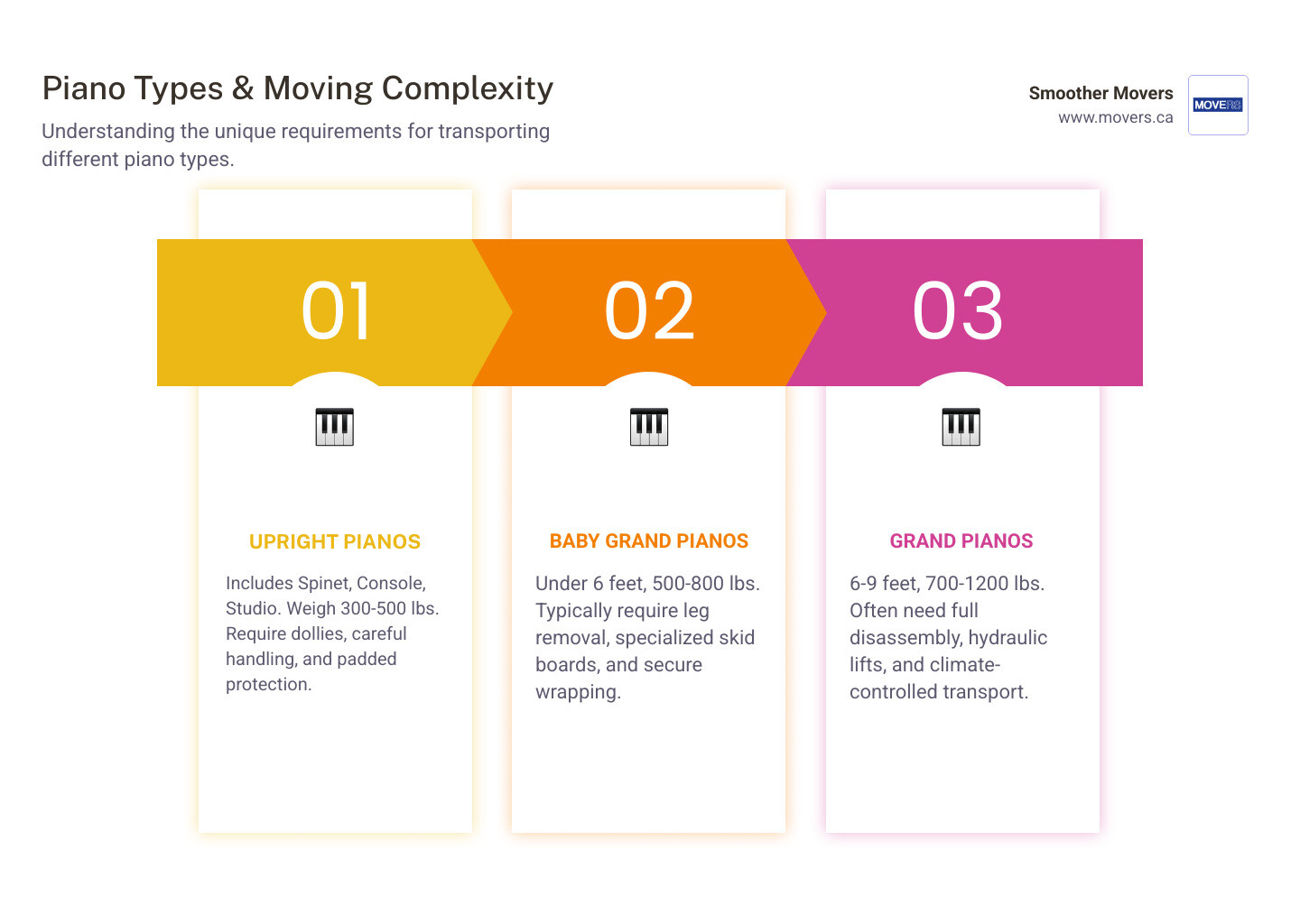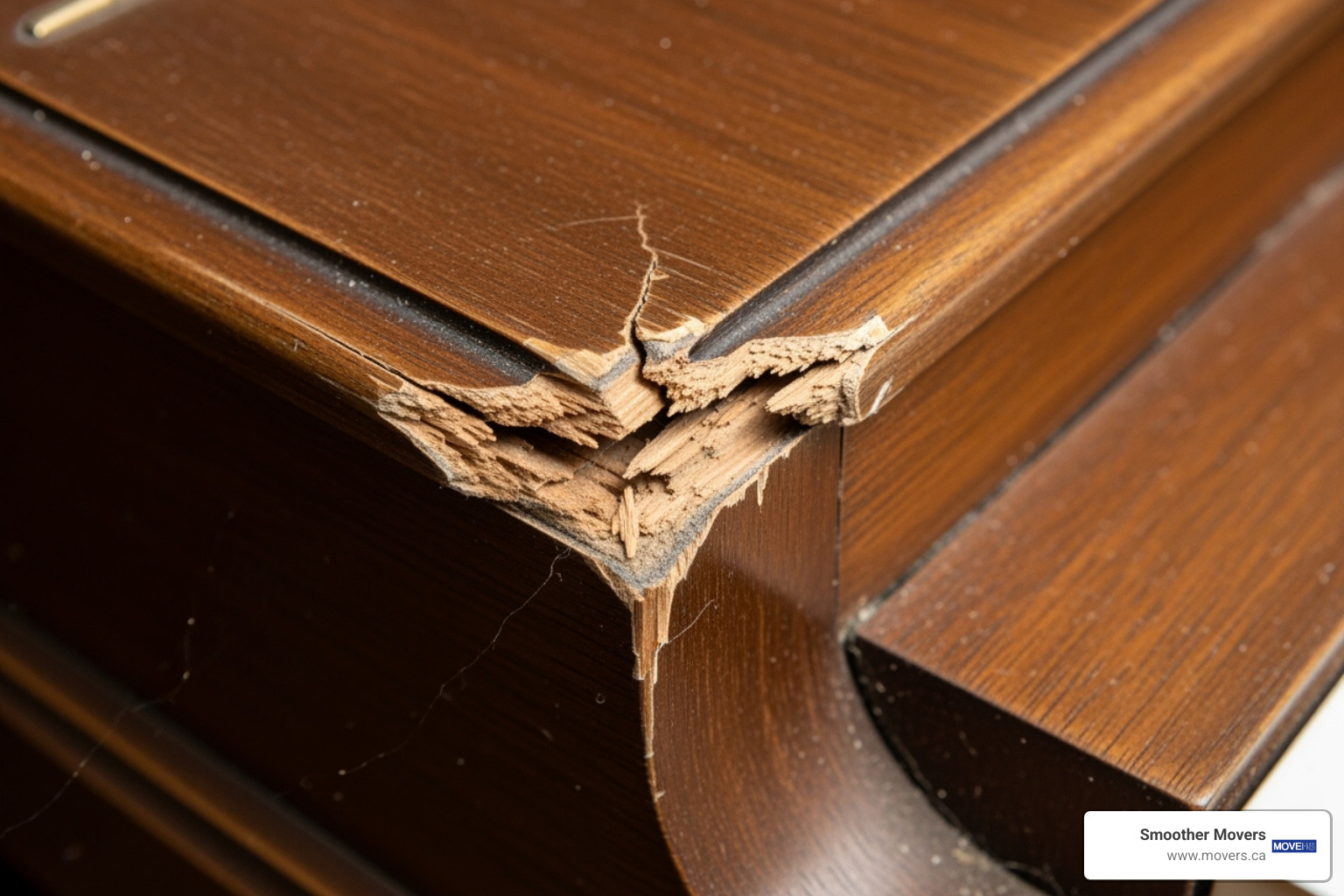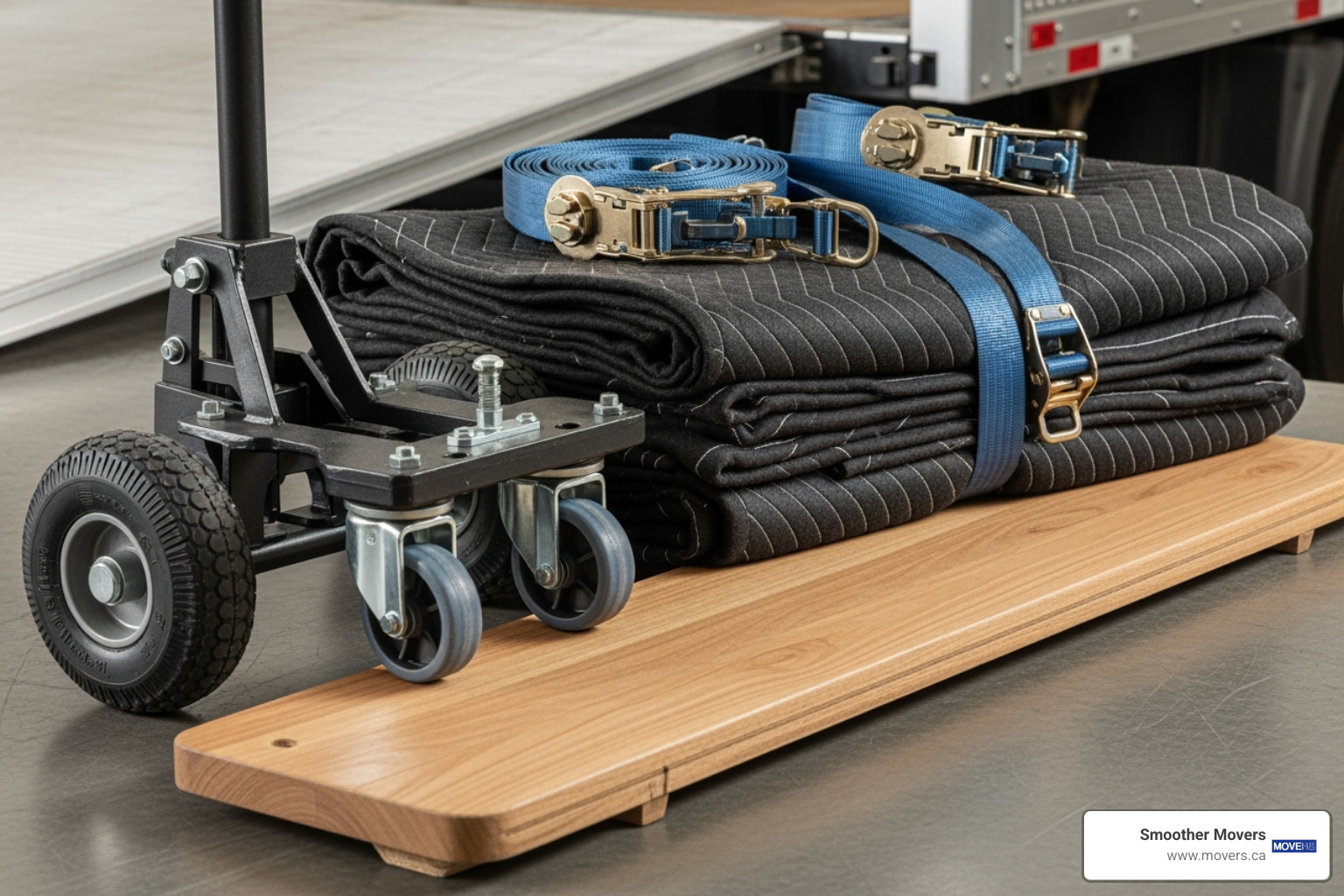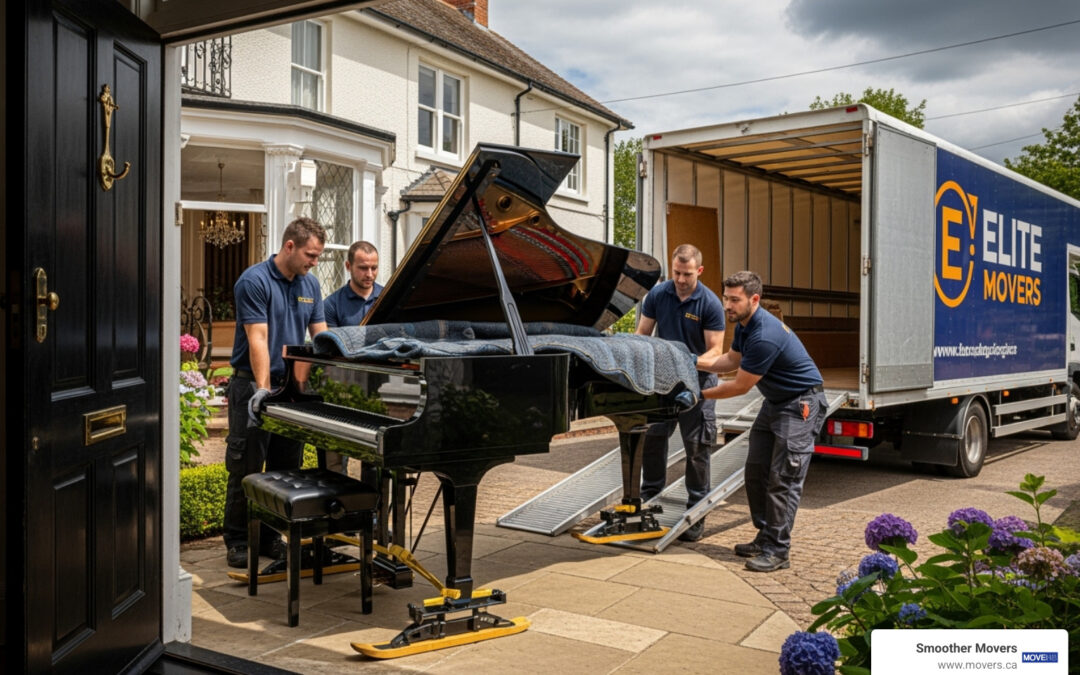Why Moving Your Piano Requires Specialized Expertise
When you’re looking for piano movers nationwide, you’re not just hiring a standard moving company. You’re entrusting a team of specialists with an instrument that is often a priceless family heirloom or a significant financial investment. Whether it’s a family piano passed down through generations or a professional instrument worth tens of thousands of dollars, pianos require an level of expertise that goes far beyond standard moving services.
The complexity of piano moving becomes clear when you consider the facts: grand pianos can weigh up to 1,200 pounds, require complete disassembly, and demand climate-controlled transport to prevent damage. A single mistake can result in thousands of dollars in repairs—or worse, irreparable damage to an irreplaceable instrument.
Professional piano movers use specialized equipment like piano dollies, hydraulic lift gates, and custom padding systems. They employ techniques developed over decades, from navigating spiral staircases in a Vancouver heritage home to crane-lifting concert grands through high-rise windows in Burnaby. As one satisfied customer noted about their family piano “Milton”: the movers showed such care for their “family heirloom” that it felt like the professionals truly understood the instrument’s value.
I’m Douglas Bensley, and over my 40 years with Smoother Movers in British Columbia, I’ve seen how proper piano moving techniques protect both instruments and homes. These are the same principles the best piano movers nationwide follow, and we apply them to every job, whether it’s a local move in the Lower Mainland or a long-distance journey across Canada. This guide will help you find the right specialists for your piano’s journey, no matter where it needs to go.

Why DIY Piano Moving is a Risky Tune

I’ll be honest with you – after four decades of moving pianos, I’ve seen what happens when people try to tackle this job themselves. It’s not pretty, and it’s rarely cheap in the end.
The most serious concern is risk of personal injury. Pianos aren’t just heavy – they’re awkwardly heavy. A spinet piano might “only” weigh 300 pounds, but try lifting that with a friend while navigating a tight corner. Your back, shoulders, and fingers are all at serious risk. I’ve watched too many well-meaning folks end up in emergency rooms because they underestimated what they were dealing with.
Then there’s the risk of piano damage itself. These instruments might look sturdy, but they’re surprisingly delicate inside. Drop a piano even a few inches, and you could crack the soundboard – a repair that can cost thousands of dollars. Bump it wrong, and you might bend the action or damage the keys. What seemed like a money-saving move suddenly becomes far more expensive than hiring piano movers nationwide would have been.
Your home is at risk too. Property damage from DIY piano moves is incredibly common. Scratched hardwood floors, gouged walls, damaged doorframes, and broken stairs are all too familiar sights. I’ve seen people cause more damage to their house moving a piano than the piano itself was worth.
The real problem is the lack of specialized equipment. You can’t move a piano safely with regular moving equipment. Professional piano movers use custom dollies, skid boards, heavy-duty straps, and specialized padding. These tools exist for good reason – regular furniture dollies simply aren’t designed for the weight distribution and delicate surfaces of pianos.
When you add up the potential costs – medical bills, piano repairs, home damage, and equipment rental – the financial cost of repairs versus professional fees tells a clear story. Professional piano moving services cost a fraction of what you might pay if something goes wrong.
The smart move? Leave it to the experts. For detailed guidance on protecting your instrument during a move, check out our Essential Tips for Protecting Your Piano During a Move: A Comprehensive Guide.
The Anatomy of a Professional Piano Move
Moving a piano isn’t just about muscle power – it’s like conducting a carefully orchestrated symphony where every note must be perfect. When you hire professional piano movers nationwide, you’re getting decades of experience wrapped up in a process that’s both art and science.
1. Handling All Types of Pianos
The first thing seasoned piano movers do is size up your specific instrument. Think of it like a doctor’s examination – each piano has its own personality and needs special care.
Grand pianos are the divas of the piano world, and they act like it during a move. These horizontal beauties need to be partially taken apart, with their legs, pedals, and lid carefully removed. A baby grand might tip the scales at 500 pounds, while a full concert grand can weigh over 1,200 pounds – that’s like moving a small car that happens to make beautiful music.
Upright pianos might seem easier since they don’t need disassembly, but don’t let that fool you. These tall, top-heavy instruments are like moving a refrigerator that’s had too much coffee – they want to tip over at the worst possible moment. Whether it’s a towering studio upright or a compact spinet, each has its own quirks when navigating tight corners and doorways.
Digital pianos and organs bring their own challenges too. While they might be lighter than their acoustic cousins, they’re packed with sensitive electronics that don’t appreciate being jostled around. Plus, organs often come with separate benches and pedalboards that need their own special handling.
The real magic happens when professionals create custom moving plans for each job. We don’t just show up with a truck and hope for the best. Instead, we carefully assess your piano’s size and weight, then study both your current home and destination like architects planning a cathedral.
2. Using Specialized Equipment

You wouldn’t try to cut down a tree with a butter knife, right? The same logic applies to piano moving – regular furniture dollies just won’t cut it when you’re dealing with a 900-pound instrument.
Piano dollies and skid boards are the workhorses of piano moving. These aren’t your average Home Depot dollies – they’re heavy-duty platforms with extra-wide wheels designed for stability. Skid boards (also called piano boards) are like padded surfboards that let us slide your piano safely and smoothly.
Every piano gets wrapped up like the precious cargo it is with heavy-duty padding and moving blankets. We use thick, durable blankets that could probably survive a small explosion – because your piano’s finish deserves that level of protection.
Straps and e-track systems keep everything locked down tight. Once your piano is padded and positioned, industrial-strength straps prevent any unwanted movement. Our trucks use e-track systems that would make a NASCAR pit crew jealous – your piano isn’t going anywhere during the journey.
Ramps and hydraulic lift gates are game-changers for loading and unloading. These provide a gentle, controlled way to get your piano into and out of the truck without any jarring impacts that could scramble its delicate internal components.
For longer moves, climate-controlled trucks become essential. Pianos are surprisingly sensitive to temperature and humidity changes – they’re like Goldilocks, everything has to be just right. Too hot, too cold, or too humid, and you might find your piano needs extensive tuning or even repairs after the move.
3. The Meticulous Preparation and Moving Process
The actual moving day is when all that planning pays off, but the real work starts long before we touch your piano.
Our initial assessment is like a reconnaissance mission. We measure doorways, check for obstacles, and map out the exact path your piano will take. If there are stairs involved – especially four or more steps – we need to know about it because that completely changes our approach and equipment needs.
For grand pianos, strategic disassembly is where things get interesting. We carefully remove legs, pedals, and the music rack, treating each piece like a museum artifact. Every component gets wrapped, labeled, and tracked so nothing goes missing.
Secure wrapping of keys and finish involves covering the keyboard to prevent keys from bouncing around during transport, then wrapping the entire piano body in layers of protective blankets. It ends up looking like a very expensive burrito.
The real test comes when we’re navigating challenges like stairs and tight corners. This is where four decades of experience really shows. Our teams have developed techniques that would make a chess grandmaster proud – every move is calculated, every angle considered. Sometimes it takes two people working in perfect sync to ease a piano around a corner that seems impossibly tight.
In extreme situations, crane rigging becomes necessary. Picture this: a grand piano on the fifth floor of a building with narrow stairs and no freight elevator. The solution? Carefully hoisting it through a window or balcony opening with a crane. It’s not something we do every day, but when it’s needed, it requires the kind of precision that would make a surgeon nervous.
The entire process revolves around one simple principle: your piano should arrive at its new home in exactly the same condition it left the old one. For more details about our specialized approach to piano relocation, check out our comprehensive Piano Moving services.
Finding the Best Piano Movers Nationwide: A Checklist for Success

Finding the right piano mover can feel overwhelming, especially when you’re searching for piano movers nationwide. After four decades in the moving business here in British Columbia, I’ve learned that the difference between a good move and a disaster often comes down to choosing the right team. Let me share what really matters when you’re evaluating piano moving companies.
What to look for in reputable piano movers nationwide
The most important quality you want in a piano mover is experience and training. Moving pianos isn’t something you learn from a manual – it’s a skill developed over years of careful practice. At Smoother Movers, our 40-plus years of experience has taught us that every piano move is unique, requiring specific techniques and problem-solving skills that only come with time.
You’ll also want movers who specialize in pianos rather than companies that move pianos as a side service. Piano specialists invest in the right equipment, train their teams properly, and understand the nuances of different piano types. They know that a baby grand requires completely different handling than an upright console.
Proper licensing and insurance should be non-negotiable. A legitimate piano moving company will carry comprehensive coverage that protects your instrument throughout the entire move. Don’t be shy about asking for proof – any reputable company will gladly provide documentation.
The voice of previous customers tells you everything you need to know about a company’s service quality. Positive reviews and testimonials give you insight into how the company handles challenges and treats customers. Look for consistent positive feedback on independent review sites to get a sense of their reputation and track record.
Finally, pay attention to clear communication from your first phone call. Professional movers will ask detailed questions about your piano, your home’s layout, and any potential obstacles. They should provide transparent pricing and realistic timelines without rushing you into a decision.
How to verify a moving company’s credentials
Before you hand over your precious piano to anyone, take a few minutes to verify their credentials. It’s easier than you might think and could save you from costly mistakes.
For companies handling long-distance moves within Canada, check their provincial registration and see if they are in good standing with organizations like the Better Business Bureau (BBB) (for example, you can search on the BBB website). A reputable mover should be transparent about their operating authority.
Always request a Certificate of Insurance before the move begins. This document proves the company carries adequate coverage for your piano’s value. A professional mover won’t hesitate to provide this – in fact, they should offer it automatically.
Professional affiliations, such as membership in the Canadian Association of Movers (CAM), indicate a company’s commitment to industry standards. You can learn more about CAM and its member expectations at the Canadian Association of Movers website. These organizations typically require members to follow codes of ethics and provide dispute resolution processes if something goes wrong.
The key is trusting your instincts while doing your homework. A company that’s transparent about their credentials, communicates clearly, and shows genuine care for your instrument is likely to provide the professional service your piano deserves.
The Logistics: Cost, Timelines, and Services
Planning a piano move means understanding the practical details that affect your budget and schedule. Let’s break down what goes into pricing and timing, so you know exactly what to expect when working with piano movers nationwide.
Decoding the cost and timeline of your piano move
Every piano move is unique, which is why getting an accurate quote requires sharing specific details about your situation. The cost isn’t just about moving a heavy object from point A to point B – it’s about the complexity of the journey.
Piano type and size play the biggest role in pricing. A compact spinet piano is naturally less expensive to move than a full concert grand that weighs over 1,000 pounds. Grand pianos require careful disassembly, specialized equipment, and more crew members, which increases the cost compared to moving an upright piano.
The distance of your move determines whether you’ll pay local or long-distance rates. Here in British Columbia, local moves within the Lower Mainland or between cities like Vancouver and Surrey are typically charged by the hour or with a flat rate. When you need piano movers nationwide for cross-country relocations, pricing shifts to mileage and weight calculations.
Stairs and obstacles can significantly impact both cost and timeline. Each flight of stairs, narrow doorway, or tight corner adds complexity to the move. We’ve steerd everything from spiral staircases in heritage homes to apartment buildings with cramped elevators. The more challenging the path, the more time and expertise required.
Getting an accurate quote means being detailed about your specific situation. Share the exact pickup and delivery addresses, your piano’s make and model if possible, and describe any potential obstacles. Most reputable movers offer free quotes, and the more information you provide, the more accurate that estimate will be.
Timeline expectations vary dramatically between local and long-distance moves. A local piano move within Vancouver or from North Vancouver to Burnaby typically takes just a few hours – maybe half a day including travel time. Long-distance moves across provinces or with piano movers nationwide can take anywhere from several days to a few weeks, depending on the distance and the mover’s consolidated shipping schedule.
Local vs. Long-Distance: Understanding piano movers nationwide
The scope of your move determines the type of service and expertise you’ll need. Local moves within British Columbia have their own unique challenges and advantages.
For local moves within our region, we understand the specific challenges of moving pianos in places like Vancouver’s narrow heritage homes, Surrey’s suburban developments, or Burnaby’s high-rise apartments. Our Professional Piano Movers Vancouver service is designed around the unique geography and architecture of the Lower Mainland.
Long-distance and nationwide moves require a different approach entirely. These moves often involve consolidated shipping, where your piano travels alongside other instruments on scheduled routes. The logistics become more complex, requiring climate-controlled transport and specialized packing to protect against vibration during extended transit.
International shipping adds another layer of complexity with customs regulations, specialized crating requirements, and different insurance considerations. While our primary expertise is within Canada, understanding these requirements helps us guide clients who need truly international solutions.
Beyond the Move: Additional Services
Professional piano moving doesn’t end when your instrument reaches its destination. Many situations require additional services that go hand-in-hand with the actual move.
Climate-controlled storage becomes essential when your new home isn’t ready or you need temporary safekeeping. Pianos are incredibly sensitive to temperature and humidity changes – the wood can warp, glue joints can fail, and the sound quality can suffer. Our Piano Storage Vancouver BC facilities maintain the stable environment your piano needs, whether for a few weeks or several months.
Tuning and repair partnerships address the reality that most pianos need attention after a move. Even the most careful transport can affect tuning due to environmental changes and normal settling. Many professional movers work with certified piano technicians who can restore your instrument’s perfect pitch and check for any issues that might have developed during transport.
Piano removal and disposal services help when an old piano has reached the end of its useful life. These heavy instruments can’t just go to the curb with regular garbage, so having professionals who can responsibly dispose of or recycle an unwanted piano saves considerable hassle.
Understanding these logistics helps you plan effectively and budget appropriately for your piano’s journey, whether it’s moving across town or across the country.
Frequently Asked Questions about Piano Moving
When you’re planning a piano move, it’s natural to have questions swirling around in your mind. After four decades of moving pianos across British Columbia, we’ve heard just about every concern imaginable. Let me address the most common questions with the honest, straightforward answers you deserve.
Is my piano insured during a professional move?
Yes, your piano is protected when you work with professional piano movers nationwide – but understanding the details is crucial for your peace of mind.
Most reputable moving companies offer different levels of valuation coverage. The basic option is called released value protection, which sounds reassuring but provides minimal coverage – often just $0.60 per pound. For your 800-pound baby grand piano, that would mean a maximum payout of $480, which obviously wouldn’t cover much if something went wrong.
That’s why we always recommend full value protection. This comprehensive coverage means the mover takes responsibility for the complete replacement value of your instrument. It’s the difference between getting enough money to buy a decent bicycle versus actually replacing your cherished piano.
The key is to get coverage details in writing before your move begins. Don’t just take anyone’s word for it – ask to see the insurance documentation. We make sure every client understands exactly what’s covered, because surprises are the last thing you want when dealing with something as precious as your piano.
How long does it take to move a piano?
The timeline for your piano move depends on whether you’re crossing town or crossing the country.
For local moves within British Columbia – say from North Vancouver to Richmond, or Vancouver to Surrey – the entire process typically wraps up in a single day. The actual loading, wrapping, and securing usually takes a couple of hours, depending on your piano’s size and any obstacles we encounter. Add in travel time and careful unloading at your new home, and most local moves are complete within four to six hours.
Long-distance and nationwide moves are a different story entirely. While the loading and unloading still take the same few hours, the transit time stretches from several days to a few weeks. The exact timeline depends on the distance, the mover’s schedule, and whether your piano shares truck space with other shipments. A piano traveling from Vancouver to Toronto might take two weeks, while one heading to Halifax could take three.
Professional movers will give you realistic timeframes upfront, so you can plan accordingly. Nobody likes uncertainty, especially when it involves your beloved instrument.
What should I do to prepare for the movers’ arrival?
A little preparation on your part makes everyone’s job easier and safer. Think of it as clearing the stage before the main performance.
Clear a path from your piano to the exit, and make sure it’s completely obstacle-free. This means moving that coffee table, rolling up area rugs, and relocating any furniture that might get in the way. The same goes for your new home – we need a clear route to where the piano will live.
Remove rugs and wall hangings that could cause problems. Loose rugs can slip under our equipment, creating hazards. Delicate artwork or mirrors along narrow hallways should come down temporarily – better safe than sorry when maneuvering a massive instrument through tight spaces.
Most importantly, keep pets and children in a separate, safe area during the move. Moving a piano requires intense focus and coordination from our team. A curious cat or excited child can create dangerous distractions. Set them up in a comfortable room with snacks and entertainment until we’re finished.
These simple steps help us work efficiently while keeping everyone safe. After all, a smooth move is what we’re all after.
Your Piano’s Final Destination
The moment your piano arrives at its new home marks the beginning of the final chapter in its moving journey. Our experienced team will carefully unload your instrument and place it exactly where you envision it living in your new space. But before you sit down to play your first song, there are a few important steps to ensure your piano settles in perfectly.
We always recommend conducting a final inspection post-move together with our team. This is your opportunity to examine your piano closely – checking the finish, testing a few keys, and ensuring everything looks and feels exactly as it should. It’s also the perfect time to address any concerns while our movers are still there to help.
Here’s something many piano owners don’t realize: after a move, especially a long-distance one, your piano needs time to breathe and adjust. Allowing the piano to acclimate before tuning is crucial for its long-term health and performance. Pianos are incredibly sensitive to changes in temperature and humidity – think of them as living instruments that respond to their environment.
We typically recommend waiting at least a week or two before scheduling a tuning appointment. This patience pays off beautifully. Your piano’s wooden components, soundboard, and intricate internal mechanisms need time to settle into their new climate. Rush into tuning too quickly, and you might find your piano going out of tune again within days.
At Smoother Movers, we’ve been perfecting the art of piano moving for over 40 years right here in British Columbia. Whether we’re carefully navigating a grand piano through a North Vancouver heritage home or transporting an upright to a cozy apartment in Chilliwack, we apply the same meticulous standards and best practices that the top piano movers nationwide use for their most precious cargo.
Every piano tells a story, and we’re honored to be part of yours. From the initial assessment to this final moment when your instrument finds its new voice in its new home, we treat each move as the important life transition it truly is.
Ready to give your piano the expert care it deserves? Contact us for your residential moving needs and let our four decades of experience handle your most treasured possessions with the respect and expertise they deserve.

